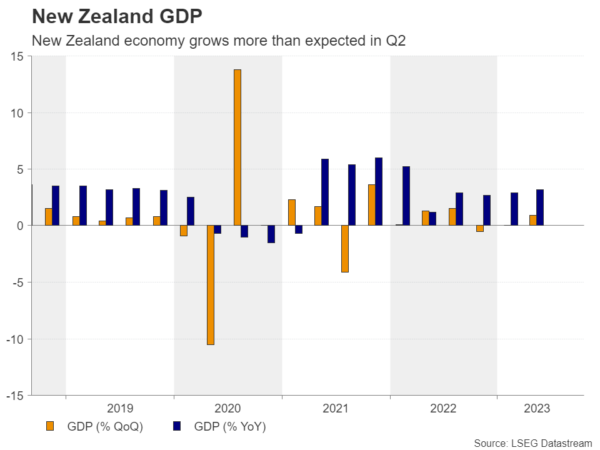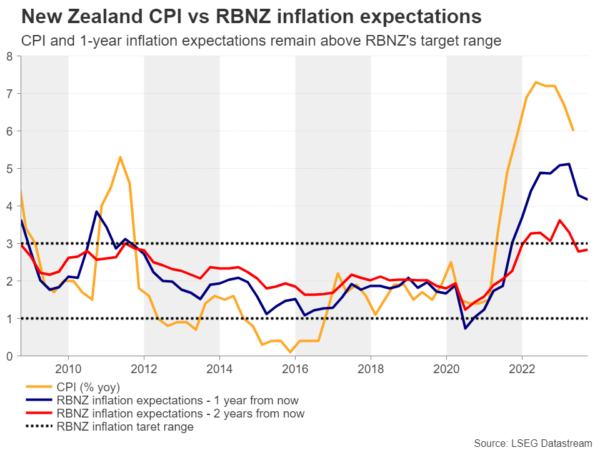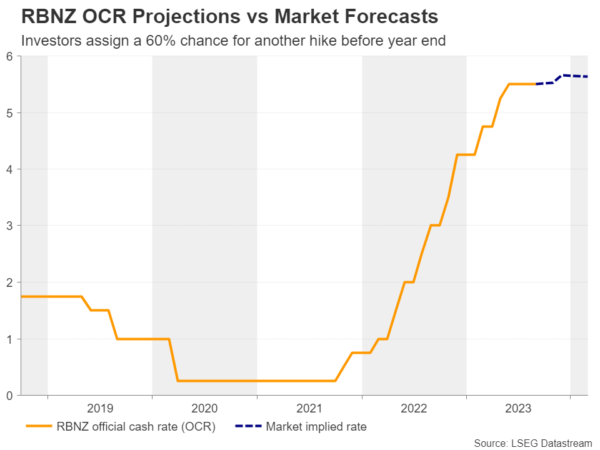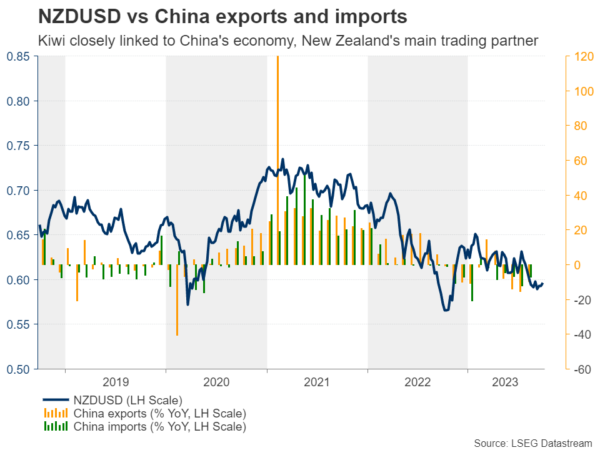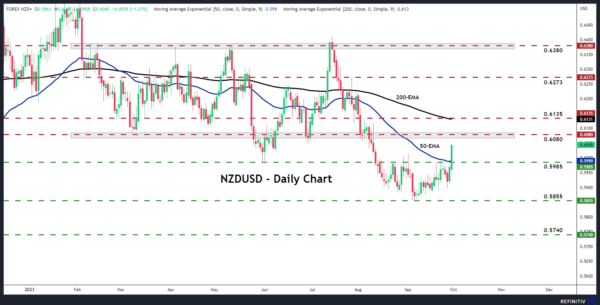- RBNZ expected to hold rates steady for the third straight meeting
- However, Q2 GDP data sparks hopes for another hike by year end
- Kiwi traders to look for changes in the Bank’s language
- The decision will be released on Wednesday at 01:00 GMT
Stellar economic performance revives hike bets
Back in August, the Reserve Bank of New Zealand (RBNZ) decided to maintain the Official Cash Rate (OCR) at 5.5%, adding that the current level of interest rates is constraining spending and thereby inflation pressures, also expressing confidence that with rates staying at restrictive levels for some time, inflation will return to the 1-3% target range.
Back then, they noted that the economy is evolving broadly as expected, with activity continuing to slow in parts of the economy that are more sensitive to interest rates. However, just last week, GDP data revealed that the economy grew by nearly double the anticipated pace in Q2, after stagnating in the first three months of the year. Although this appears to be a relief for the current government, which is under fire for how they’ve been handling the economy ahead of an election on October 14, it may worry the central bank which likely needs slower growth to achieve its inflation goal.
With the Bank projecting that the economy would slip into recession in the second half of 2023 and the data offering no such sign, investors have begun pricing in around a 60% probability for another quarter-point hike by the end of the year as the stronger economic performance, combined with the latest rally in oil prices, adds upside risks to the nation’s 6% inflation rate. Yes, 1-year inflation expectations are much lower, but still above the Bank’s target, with only the 2-year projection lying slightly below the upper bound of the 1-3% target range.
Will officials adopt a more hawkish language?
For Wednesday’s meeting, investors are 90% confident that policymakers will refrain from acting, and should this be the case, they may dig into the statement of hints on whether the Bank will open the door to another hike.
All that suggests that, even if the Bank stands pat, the meeting could be a live one. The kiwi may slide in the case of policymakers abstaining from commenting on the possibility of additional hikes, as those expecting more may be disappointed. The opposite may be true should they bring to the table the likelihood of more action.
Given that this will be one of the shorter meetings that are not accompanied by updated economic projections, and that policymakeres may prefer to have the CPI numbers for Q3 in hand before examining whether higher rates are needed, the former outcome may be more likely. The November gathering appears to be a wiser choice for proceeding with any policy or language changes.
Kiwi traders may get disappointed
The kiwi has been in a recovery mode the last couple of days against the US dollar, but this was mainly due to the dollar pulling back, perhaps as traders are rebalancing their portfolios and liquidating some long-dollar positions on the last trading of the quarter.
A potentially dovish RBNZ could keep that recovery in check and bring the kiwi back under pressure. That said, given that monetary policy is not the only variable in the equation of the risk-linked currency, traders may have more than the RBNZ decision to examine. The challenges facing China, the world’s second-largest economy and New Zealand’s main trading partner, as well as concerns about the economic performance of Europe and the UK, could constitute another element of anxiety, and thereby add extra weight on the currency.
Kiwi/dollar headed towards key resistance
Kiwi/dollar rallied above the 0.5985 zone today, confirming a temporary bottom at around 0.5855. However, the pair looks to be headed towards the very important zone of 0.6080, which acted as the lower end of the sideways range that contained most of the price action between February and August. The bulls may get rejected there if indeed the RBNZ appears dovish, with the potential subsequent decline aiming for another test at 0.5985. A break lower could encourage extensions towards the low of September 6, at 0.5855.
On the upside, even if kiwi/dollar climbs above the 0.6080 barrier, the picture would not be painted positive. Such a move may only signal the pair’s return within the aforementioned range, and thereby turn the outlook to neutral.




